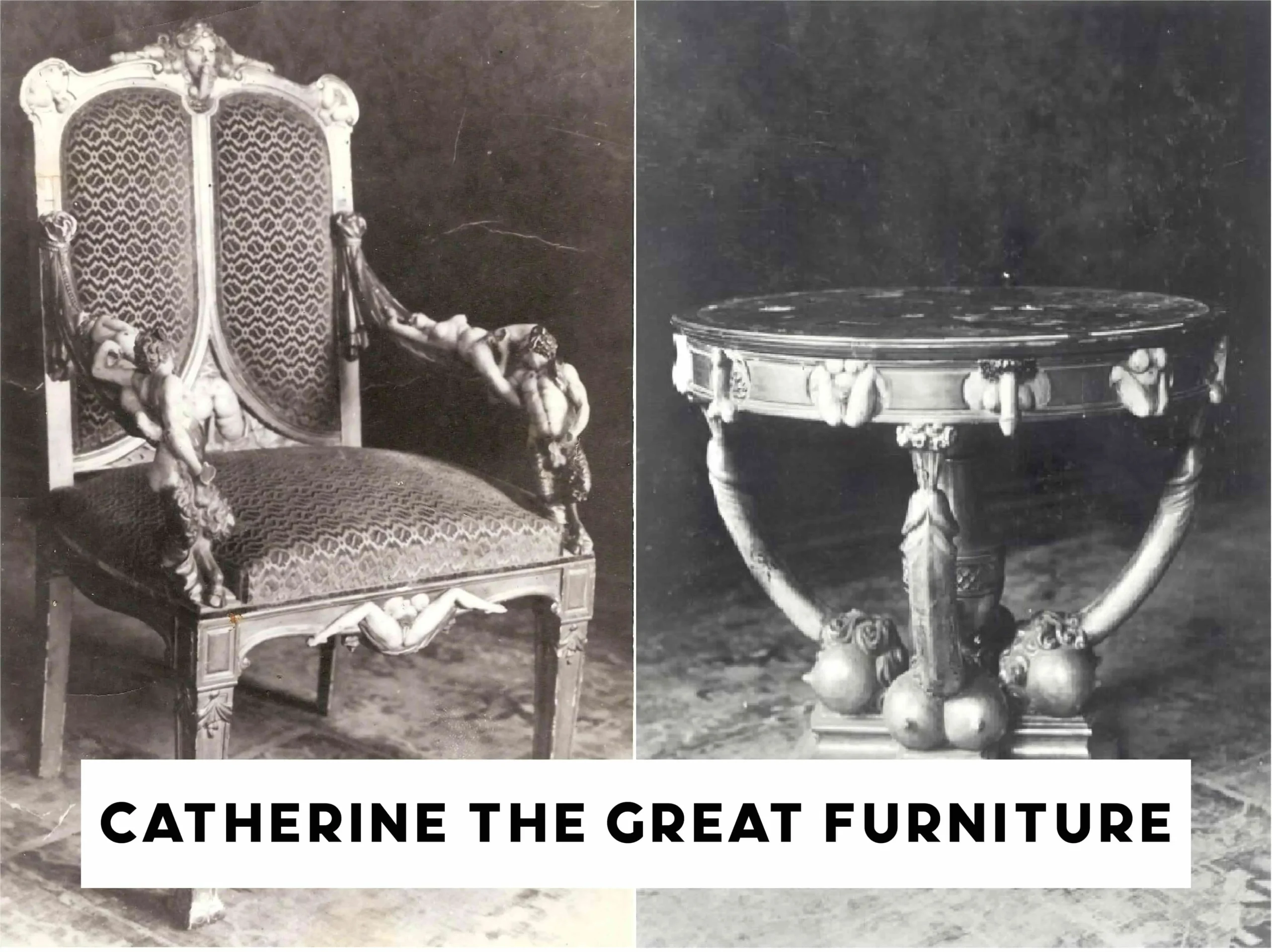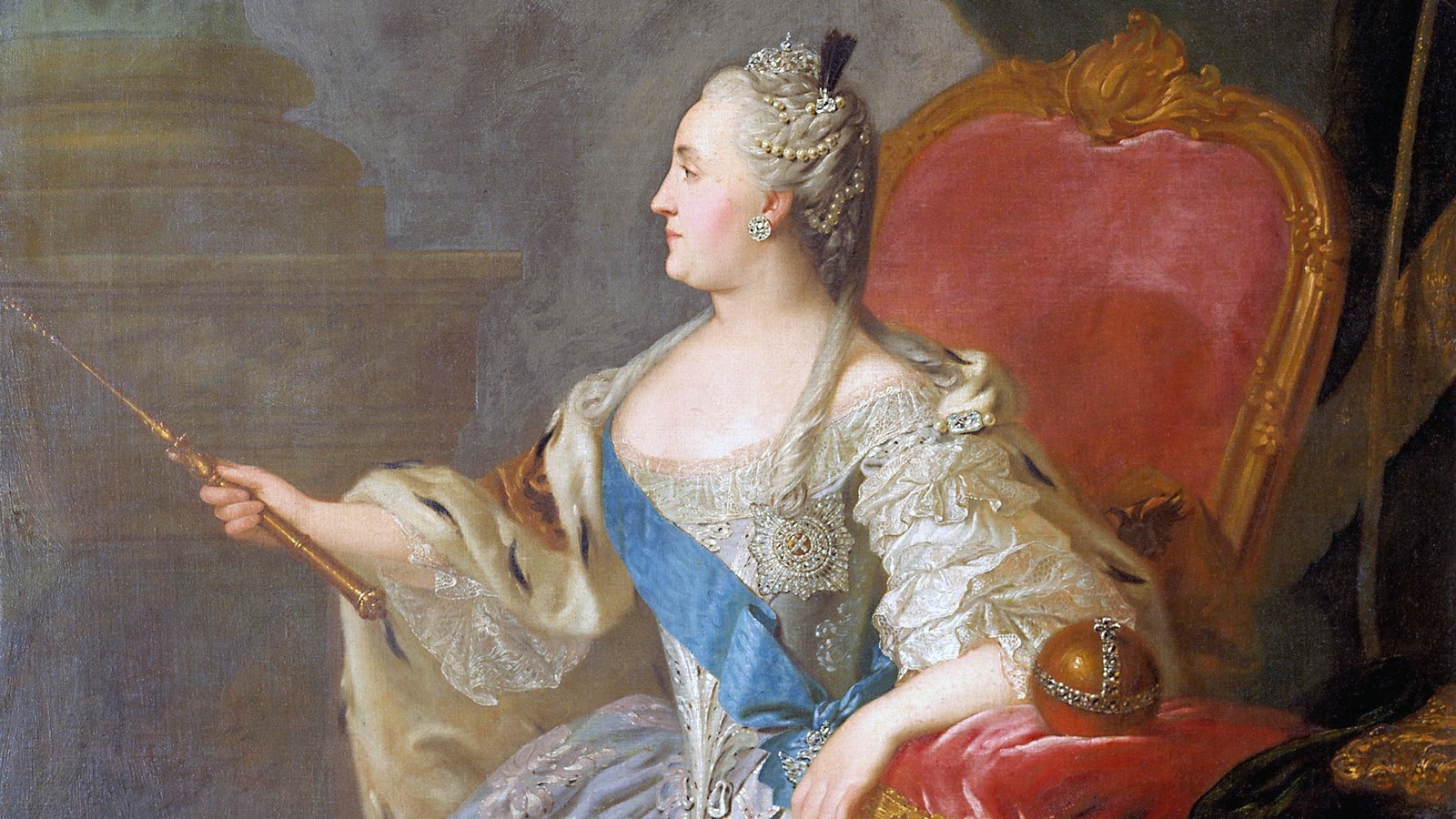Catherine the Great, a renowned ruler in Russia, left a lasting impression on not only history and politics but also art and culture. Her reign from 1762 to 1796 is often associated with a flourishing of the arts and a period of significant cultural advancement in Russia.
Among the many facets of her legacy, Catherine the Great’s patronage of the arts, including furniture design and craftsmanship, stands out as a testament to her refined taste and dedication to promoting cultural excellence.
Brief History of Catherine the Great

Catherine the Great was born on May 21, 1729, in Stettin located in Prussia, or present-day Poland She ruled the Russian Empire from 1762 until she died in 1796. She ascended to the throne after you can say, ousting her husband Peter III in a military coup.
Catherine is credited for Russia’s policies of enlightening society and acquiring new territories through warfare and treaties. She supported the education of the public and the arts, established the Hermitage State Museum in St Petersburg, and exchanged letters with distinguished Enlightenment philosophers including Voltaire.
Catherine was not only a great empress, but, like all, her rule was full of political upheavals and rebellions such as the Pugachev Rebellion in 1773-1774. She also said that Russia ever had a powerful monarch who was remembered as Catherine the Great due to her influence in the history of Russia.
Influence of Catherine the Great on Furniture Design

Among the other famous rulers that impacted furniture design during the rule time, the Empress Catherine the Great of Russia, who ruled from 1762 to 1796, played an important role. Being a woman of great elegance, she loved art and culture and as a result, people knew her to have romanced neoclassical design of furniture where she took her inspiration from the Greeks and Romans.
She ordered making complex and fancy furniture for her palace chock full of carvings, gilding, and even materials such as mahogany and silk. Catherine’s influence led to the promotion of neoclassical design all through Europe and this brought about the works of some of the famous furniture makers like Thomas Sheraton and George Hepplewhite. She is also remembered for her elegance in furniture designs of her young adult years.
Styles and Characteristics of Catherine the Great’s Furniture
Rococo
Rococo prevailed during the initial period of Catherine’s reign and remained the leading style in Russian furniture before the middle of the eighteenth century. This furniture is recognized for its delicate, curved design that resembles the Baroque style but is more intricate and asymmetrical, featuring scroll-shaped and shell-shaped embellishments.
Features of Rococo Furniture:
Elaborate Ornamentation: The wooden structures are mainly decorated with delicate carvings and sometimes gilding is used.
Curved Shapes: Of curves, an S-shape, and serpentine shapes as seen in chair back and table legs or cabinet fronts.
Luxurious Upholstery: Usually covered in luxurious materials such as silk and velvet; at times studded with embroidery and tagged with tassels and fringes.
Light and Playful: A stress laid on the principles of beauty which included the aspect of lightness and grace.
Neoclassicism
Neoclassicism rose to popularity towards the latter half of the 18th century and was characterized by better proportions and balanced symmetry with clear references to the ancient styles of Greece and Rome. Neoclassical architecture was widely used during the reign of Catherine the Great who appreciated Enlightenment and classical motifs.
Features of Neoclassical Furniture:
Symmetry and Order: La linea rettilinea, i soggetti geometrici e un’equilibrata proporzione.
Classical Motifs: Greece, columns, pilasters, greek key patterns, urns, laurel wreaths.
Elegant Simplicity: Less decoration than with the Rococo movement, which paid more attention to the architectural forms.
Russian Imperial Style
Apart from Rococo and Neoclassicism, the empress herself stimulated arts that embodied the Russian Imperial style – a style that marks the synthesis of European techniques in arts and local craftsmanship. In this style, elements of grandeur were included and lots of luxurious materials were used together with fine details to indicate the authority and magnificence of the Russian royalty.
Features of Russian Imperial Style:
Rich Materials: Luxury elements which include the use of expensive woods, expensive metals, and expensive gems in the decorations.
Elegant Proportions: On the whole furniture pieces were much larger as was appropriate for imperial palace structures.
Opulent Finishes: Lacquering, gilding, and marquetry together with inlay as the methods to create an appearance of affluence on furniture.
Types of Furniture
Furniture made for Catherine the Great includes a variety of forms and styles as can be expected from a culture as vast and diverse as the court of Russia. Some of the most notable pieces include:
Thrones and State Chairs
Catherine as a monarch needed furniture that would reflect her status and that of the monarch as much as possible. The thrones and state chairs were meant to have that element of grandeur and they were suggested to be commanding. Ornately designed with plush cushioning on the seats and exquisite emblems and gilded bracing on the frames, these pieces were the centerpiece between the grand hallways and extraordinary rooms of Catherine’s palaces.
Soft Furnishing Products for Salon and Drawing Rooms

The social activity that took place at Catherine’s salons and formal drawing rooms can be described as socializing, entertaining, and diplomacy. The chairs and tables used in these rooms were comfortable and of good finishes. Sofas, armchairs, and occasional tables are sectioned into convenient and intimate small conversation areas. Upholstery materials included luxurious silks and exquisite brocades depending on the existing fashions in dress and textiles.
Secretary Desks and Cabinets
Catherine was a reader cum collector of books, especially in literature history, and philosophy. Secretary desks and cases, bookshelves, and cabinets offered her both storage and visibility of the large number of books, manuscripts, and curiosities she so much cared for. These pieces were normally complex in terms of the designs that were put on the furniture and the furniture was also designed to have concealed drawers.
Legacy and Enduring Appeal
Catherine the Great Furniture reaches beyond the historic period of her rule and regulates the following generations of designers and masterpieces. This beautiful, intricate, and sophisticated creation can be seen today in her furniture designs that are unmatched and still admired by today’s designers and collectors. Today, museums and galleries around the world display examples of Catherine the Great furniture as the remarkable masterpieces of the periods characterized by exquisite taste and style.
Frequently Asked Questions(FAQs)
What is Catherine the Great furniture?
Catherine the Great furniture defines the actual furniture, namely those that were procured or obtained during the reign of Catherine the Second or Catherine of Russia (1762-1796). It is a very broad concept that, in terms of style, material, and form, was characterized by the Empress’s desire but also by the aesthetic context of the epoch.
What are the characteristics of Catherine the Great furniture?
Typified by the delicate design, luxury, and refinement, Catherine the Great furniture is specifically distinguished. It is often of Neoclassical or Rococo style with such woods as mahogany, walnut, and satinwood in use, marquetry work, carving, and gilding.
Which styles of furniture were characteristic of the era of Catherine the Great?
In Catherine the Great Age, many kinds of furniture were favored, such as the throne and state chair utilized for official purposes, salon and drawing room furniture used for receiving guests and entertainment purposes as well as desks and cabinets with books and curiosities.
What influenced Catherine the Great Furniture?
With the help of a furniture description, it is noted that neoclassicism, as a strand of the European art of the period, affected Catherine the Great together with the Enlightenment of the French period. About the Neoclassical style, The Empress and members of her circle were attracted by the harmony and the clarity of the shapes, as well as by the Directions of the Enlightenment stressing harmonization and balancing in art and design.
What have they left behind as the legacy regarding Catherine the Great furniture?
Cutting and gilding of furniture that is typical for Catherine the Great furniture continued the tradition in future generations of furniture making. Today many museums and galleries of the world have samples of Catherine the Great furniture that is characteristic of its elegance and historical value.
Conclusion
Therefore, life-sized furniture or rather creations crafted by Catherin the Great are not only decorations; they depict culture and art elements prevalent in her reign era. Through her patronage and good selection, Catherine’s Russian furniture design imprints will remain unforgettable in creating styles and works that survived through the lenses of style hunters and historians.
As we appreciate the beauty and craftsmanship of Catherine the Great’s furniture, we also celebrate her enduring legacy as a visionary leader whose passion for the arts enriched the cultural heritage of Russia and beyond.



